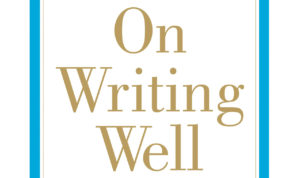According to the National Assessment of Educational Progress (or NAEP), the average high school student is an incompetent writer. To evaluate their writing ability, testers asked high school juniors to write a paragraph based on notes they were given about a haunted house. The performance of half the students was judged to be either unsatisfactory or minimal. The following is a "minimal" response:
"The house with no windows. This is a house with dead-end hallways, 36 rooms and stairs leading to the cieling [sic]. Doorways go nowhere and all this to confuse ghosts."
This is the student's complete, word-for-word response-and represents the performance of nearly half of all eleventh graders. Most of the other half were evaluated as writing "adequate" paragraphs. Just two percent wrote something that was judged to be "elaborate," a step up from "adequate."
This explains why when Francisco LePort, one of my first students, started college at the age of 13, he was pulled aside by his humanities professor and asked, "Where did you learn to write so well?" In an age plagued by misguided efforts at preserving students' "self-esteem" (by leaving their mistakes uncorrected), classrooms bursting at the seams, teaching-to-the-standardized-test methods, and a disdain for the traditional, rigorous, academic approach to education, essay writing is simply not taught.
It is taught at VanDamme Academy. Our K-1 students learn to write complete, articulate, properly punctuated sentences; our lower elementary students learn to write coherent, grammatical, well-structured paragraphs; our upper elementary students learn to write clear, fluent, logical essays; and for our junior high students, who have been through this evolution, the writing process is second nature. That is why when a law professor evaluating the school for her children, after seeing samples of the junior high students' essays, asked whether she could photocopy them to show her law students what real writing looked like. . . .













